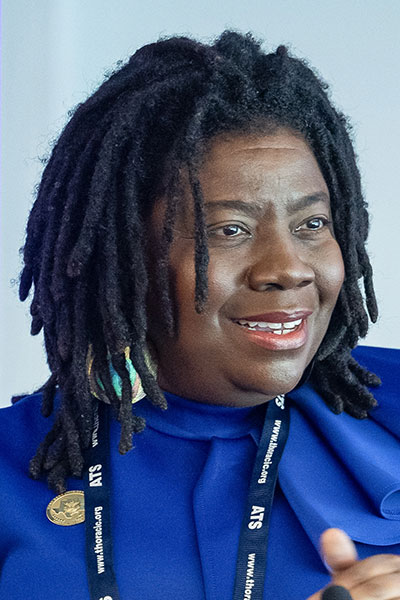
“If you treat the person, you treat the disease,” is one way that patient-advocate Erica Courtenay-Mann defines the concept of personalized medicine.
Ms. Courtenay-Mann said she developed this insight in response to a life-altering diagnosis and nearly 15 years of living as a “sarcoidosis warrior.”
Her succinct description of personalized medicine aligns with how medical fields are beginning to apply this forward-looking approach. On Saturday, the ATS Public Advisory Roundtable (PAR) hosted Ms. Courtenay-Mann and a panel of researchers and clinicians during its annual Patients & Experts Forum. This year’s theme was “Personalized Medicine in Pulmonary Care – What it Means to be the Patient.”
An Evolving Definition
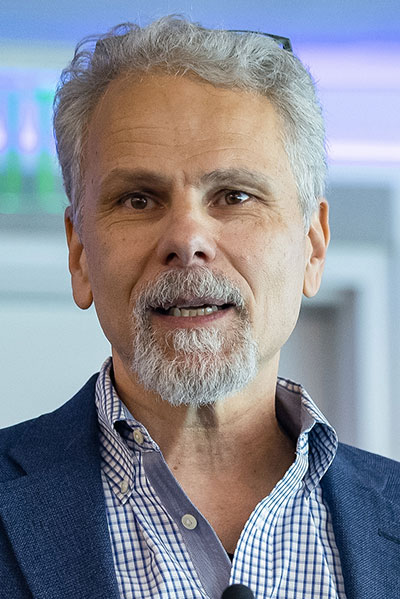
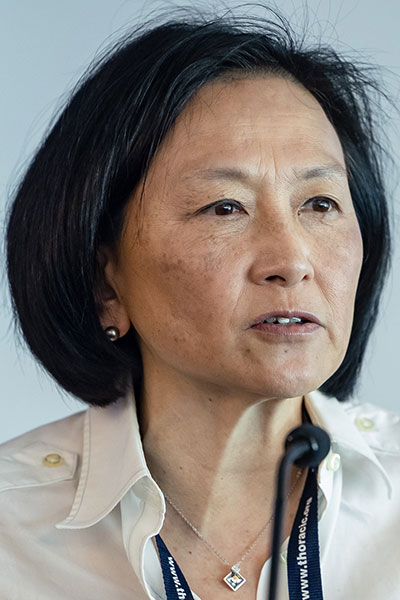
Personalized medicine is often defined as the belief that optimal care can come from an individualized treatment plan with shared patient decision-making to provide “the right care, to the right patient, for the right disease type, at the right time,” explained Michelle Ng Gong, MD, MS, ATSF, secretary of the ATS, chief of the Division of Pulmonary Medicine, and chief of the Division of Critical Care Medicine at Montefiore Medical Center and Albert Einstein College of Medicine.
Personalized medicine is closely related to the term precision medicine, with the latter focusing on research and treatment designs, while the former typically applies to bedside care, added Steve N. Georas, MD, ATSF.
According to the PAR panelists, personalized medicine can vary widely from one field to another, though there are common core concepts, such as patient input, living history, and patient endotypes.
The Success Story

Gregory Sawicki, MD, MPH, ATSF, said that personalized medicine has played a key role in the treatment of cystic fibrosis (CF), “one of the greatest success stories in the history of pediatric medicine.”
Sawicki, the director of the Cystic Fibrosis Center at Boston Children’s Hospital and an associate professor of pediatrics at Harvard Medical School, noted that CF was nearly always fatal when it was first described in 1938. Now, patients living with CF are not just living longer, they are living healthier. Of the approximately 40,000 Americans with CF, 60 percent are over 18 years old, many with prospects to live to average age spans and entering their adult years with nearly full lung capacity.
Sawicki noted that this evolution occurred by identifying thousands of potential gene defects and developing specific treatments based on these investigative insights. For example, the precision medicine approach for a patient with Class II CF, where the CFTR protein is created but is misfolded, would be different from the treatment for a patient with Class III CF, where the CFTR protein is created and reaches the cell surface, but does not function properly.
Sawicki noted that while issues of cost and access remain vital concerns, the personalized medicine approach for CF has been a “game-changer” that fundamentally shifted the treatment goal from palliative care to early identification and prevention.
Personalized Medicine Across Thoracic Fields
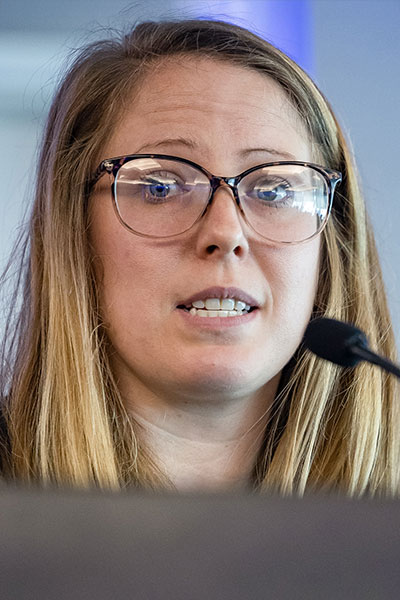
For other areas of thoracic treatments, personalized medicine remains an aspirational target, but with some significant advances.
Dr. Georas, professor of medicine at the University of Rochester Medical Center, noted that the treatment of asthma has become more effective and more focused by identifying a patient’s asthma endotype and then creating a therapy around this.
Asthma, Dr. Georas noted, is an inherently heterogeneous condition where it becomes essential to “be precise when making a diagnosis of asthma type,” and to follow through with corresponding treatment.
Heterogeneity also presents significant limitations and challenges in critical care, where medical staff face intensive care unit syndromes, such as sepsis or acute respiratory distress syndrome (ARDS), explained Elizabeth S. Munroe, MD, ATSF, a research fellow and clinical instructor in pulmonary and critical care medicine at the University of Michigan Medical School. She noted that clinical trials focusing on the classifications of these two diseases have been “largely disappointing.”

The critical care field has also recently begun applying concepts of personalized medicine based on biology and physiology to classify patients.
For example, recent and ongoing studies focused on hypo-inflammatory and hyper-inflammatory treatment responses as distinct sub-phenotypes in the classification of ARDS patients.
Paul Wolters, MD, ATSF, noted that precision medicine is just beginning to be incorporated into the treatment and management of the many clinical subtypes of interstitial lung diseases (ILDs).
“They are different diseases, different causes, and different therapies,” said Dr. Walters, professor of medicine, School of Medicine, University of California, San Francisco. “That is why we spend a lot of time trying to separate these ILDs.”
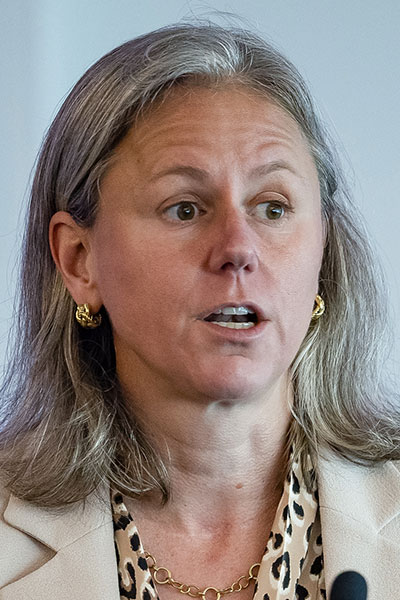
To identify pulmonary fibrosis among ILDs, clinicians traditionally relied on learning a patient’s occupational history, family history with disease, and exposure risks, then combining this information with a tomography scan (which could be easily misread) or a lung biopsy (which was dangerous). New options include genetic tests and peripheral blood leukocyte telomere length tests, which are proving to be safer and more reliable paths to guiding personalized treatment.
Anna R. Hemnes, MD, ATSF, noted similar progress in what she called “evidence-based medicine” for patients with pulmonary hypertension.
“We’re not quite at the stage of precision medicine” as some of the other fields, noted Dr. Hemnes, professor of medicine and the director of the Division of Allergy, Pulmonary and Critical Care Medicine at Vanderbilt University Medical Center, “but there is a move to a more personalized medicine approach.”
In 2025, Dr. Hemnes noted significant developments, such as the ATS funding new U.S.-based treatment guidelines for pulmonary hypertension.
Personalized Medicine, Personalized Lives
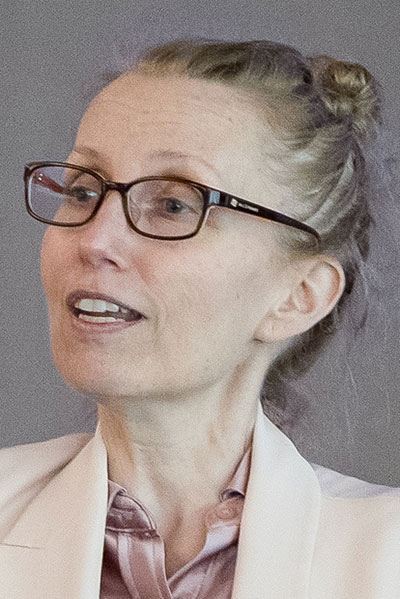
Several areas of personalized medicine can be more simply developed, according to Dawn L. DeMeo, MD, MPH, ATSF, an associate professor of medicine at Harvard Medical School and a pulmonologist at Brigham and Women’s Hospital. These areas include studying a patient’s medical history, nutrition habits, levels of psychosocial support, and how hormonal changes might be interacting with a patient’s age and sex. Clinicians should also spend time listening to a patient and incorporate their concerns and voice into the treatment plan.
“No patient report should be discarded,” said Dr. DeMeo. For any field of medicine, “partnerships with patients are critical.”
Ms. Courtenay-Mann added that patient partnerships can begin with an understanding and empathy of how a disease affects each person differently.
She recalled having her complaints of fatigue repeatedly dismissed until she was eventually diagnosed, admitted into surgery, and forced to reckon with a new personal reality.
“I was a mother with a young kid, and I was scared. I knew it was the death knell for my marriage. I had to figure out what the repercussions were for having a chronic illness, a career, a kid, and a life,” Ms. Courtenay-Mann recalled.
In response, she joined the Foundation for Sarcoidosis Research, created by a community of fellow patients, and decided that she “just had to do better at advocating for myself.”
Her initial goal was to remain alive for her child’s graduation, but she added aspirations to be a stakeholder in her own outcome and to help other patients to do the same for their own personalized treatments.
Patients, said Ms. Courtney-Mann, “are more than just a co-pay and more than just a data point.”
The ATS thanks Genentech, Inc., Insmed Incorporated, and United Therapeutics for their generous support of the ATS 2025 Patients & Experts Forum.
Extend Your Learning Beyond San Francisco with ATS 2025 Conference Highlights

With so many valuable educational opportunities offered during the ATS 2025 International Conference, attendees are often forced to decide which sessions to prioritize. That’s why the Society is offering three ATS 2025 Conference Highlights packages for those unable to attend ATS 2025 San Francisco or attendees interested in continuing their education after the conference. Check out the packages and pick the one that’s right for you. Learn at your own pace, whenever and wherever you are!

